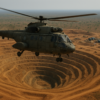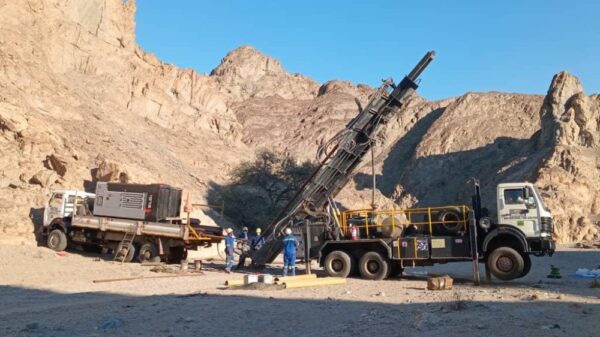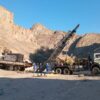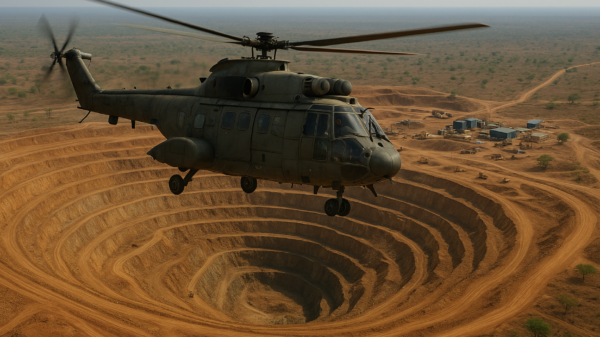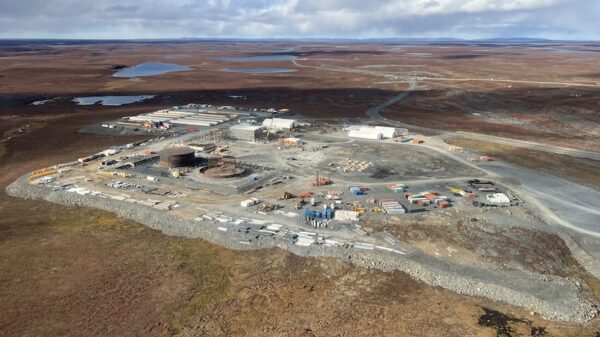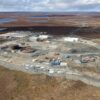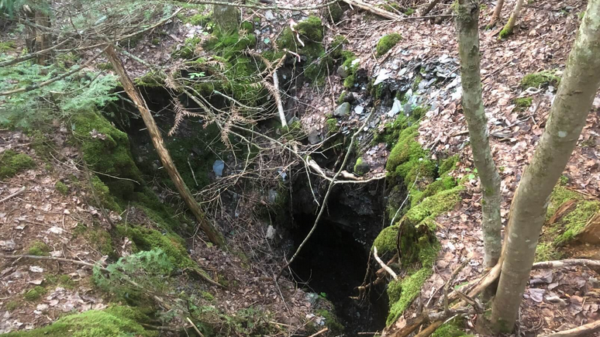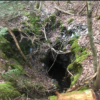Barsele Minerals (TSXV: BME) provided an operational update about its 2022 exploration activities in the Barsele Gold-VMS Project in Västerbottens Län, Northern Sweden.
The plan is operated by joint venture partner Agnico Eagle Mines (TSX: AEM) (NYSE: AEM), with ownership being 55 per cent Agnico and 45 per cent Barsele. Agnico also has the option of getting an additional 15 per cent in the Barsele Project after a pre-feasibility study. Additionally, Barsele is not required to put any cash down until the study is completed.
Agnico Eagle contractors performed office-related and field-specifics activities at a few exploration sites between January 1 and December 30, 2022. These included prospecting and mapping, geophysical surveys, diamond drilling, basement of till mining and water sampling. Also, they engaged an extensive surface till sampling campaign (MEFFA) using fine fraction analysis.
The company’s project is on the western end of the Proterozoic “Skellefte Trend.” This is a volcanogenic massive sulphide (VMS) deposits belt intersecting the “Gold Line” in Northern Sweden. The region and property contains both polymetallic VMS desposits and orogenic gold.
Read more: Calibre Mining 2022 operating results show year round gold production of 222K ounces
Read more: Victoria Gold diamond drilling shows consistent gold mineralization
Barsele drilled 14 holes during the summer

Detailed project map. Image via Barsele Minerals.
Barsele released an independently verified mineral resource estimate on February 21, 2019. It was then modified and resubmitted as of December 16, 2020. The study concluded drilling to the end of 2018 along the Avan–Central–Skiråsen gold zones with various cut off points for various methods.
For example, it includes a 0.50 g/t gold cut-off for a pit constrained extraction mining method, and a 1.50 g/t gold cut-off for a bulk underground extraction mining method. It also includes a 1.80 g/t gold cut-off for a selective underground extraction mining method.
It also outlined an inferred resource of 25,495,000 tonnes grading 2.54 g/t gold (2,086,000 ounces of contained gold) and an indicated resource of 5,578,000 tonnes grading 1.81 g/t gold (324,000 ounces of contained gold).
The company drilled 14 core holes between June 3 and September 19 in the 34,533 hectare property with a total of 4,252 metres. That brings the total to 162,691 metres of overburden penetration and core collection from 436 drill holes. The company drilled in a number of different areas, including Avan (AVA), Risberget (RIS), Norra (NOR), Skiråsen (SKI), Södra Sundträsket (SUN), and Bastuträsk (BAS).
Barsele Minerals drilled four expansion holes at Avan. The first was AVA 18002, drilled towards the southwest and above 18002. It intersected four zones with arsenopyrite mineralization and quartz veining. The second was AVA 22002, which was drilled above the northeast and cut various granodiorite phases from 127 metres and found seven locations with scheelite at three locations. The best result came from 11 metre core length grading 1.78 g/t Au, which included an 8 metre core length grading 2.24 g/t Au at a midpoint depth of 152 metres below the surface.
The final two holes at Avan were AVA 22003 and AVA 22004. The first was drilled 140 metres northwest of AVA 22002 and cored granodiorite containing zones with arenopyrite and quartz veining. The best result included a 6.0 metre core length grading 1.13 g/t Au, including 3.0 metres grading 1.95 g/t Au at a depth of 47 metres below the surface.
Drill testing expected to contribute to future mineral resource expansion
Meanwhile, the company drilled hole AVA 22004 in a southwestern direction from the northern shore of Barseleavan Lake. The hole intersected mainly granodiorite, with discrete zones of arsenopyrite and quartz veining. Visible gold appeared at two locations with the best results coming from a 1.0 metre core length grading 10.10 g/t Au, at a midpoint depth of 25 metres below surface, plus a 1.0-metre core length grading 4.70 g/t Au, at a midpoint depth of 145 metres below surface, plus a 1.0-metre core length grading 4.20 g/t Au, at a midpoint depth of 245 metres below surface.
Barsele drilled two holes at Risberget. The first hole, RIS22001, intersected a zone of altered and arsenopyrite/pyrite/pyrrhotite mineralized andesite enclosed in brecciated black shale and mafic intrusive. Favourable results were from an 8.25 metre core length grading 0.95 g/t Au. The midpoint depth was 85 meters below the surface. The second hole RIS22002 pulled up sequences of metasediment/greywacke, andesite and mafic intrusive. Best results came from a 3.0 metre core length grading 2.75 g/t Au. The midpoint depth was 69 metres below the surface.
The Norra regional hole NOR22001 cored into a sequence of rocks representing the stratigraphic hangingwall of the Norra VMS mineralization. This was encountered between 204.70 and 206.25 metres downhole. Also, the drilling uncovered weak arsenopyrite, sphalerite, chalcopyrite mineralization, but no precious or base metal results.
The second of the two Norra regional holes, NOR22002, drilled 250 metres east southeast of hole 22001. The company tested the northern limb of the Norra massive sulphide zone. The results included a 1.0 metre core length grading 0.47 g/t Au at a midpoint depth of 135 metres underground.
No basic or precious metals at Skiråsen
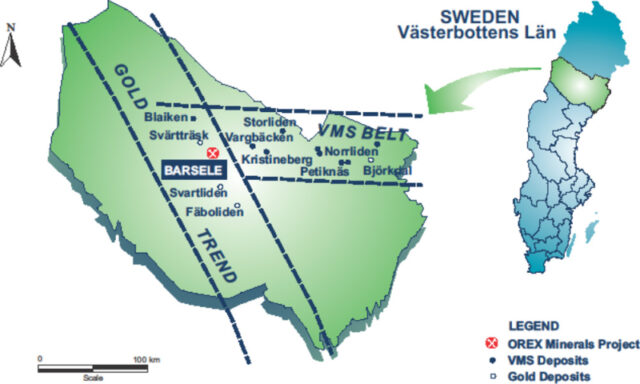
Project map. Image via Barsele Minerals.
The company drilled two holes at Skiråsen. Both holes, regional holes SKI22001 and SKI22002, tested the source of high-grade polymetallic boulders 200 metres southeast of the hole collar. The first hole found discrete zones of arsenopyrite mineralization but no precious or base metals. The second hole found copper and zinc enriched sediments, but no basic or precious metals.
Barsele drilled another two holes at Södra Sundträsket. Each hole tested multi-element geochemical anomalies identified in the MEFFA, bottom moraine and in-situ rock chip sampling. The first hole, SUN22001, cored tonalite and granodiorite with quartz veining and arsenopyrite between 110 and 120 metres. Also, drilling uncovered no precious or base metal results.
The second hole, SUN22002, differed in that it cored tonalite and metasediment, but also had no precious or base metals.
The company’s final series of holes were at Bastuträsk. In this case, regional hole BAS22001 intersected north-south and northeast-southwest interpreted structures based on ground magnetics. The compound found an intercept in gabbroic host rock, and yielded a 7.0 metre core length between 192 and 199 metres, grading 0.32 g/t Au. The find is associated with anomalous tungsten and arsenic with a midpoint length of 130 metres below surface.
Barsele drilled Bastuträsk regional hole BAS22002 to test cross-cutting structures and continuity of a high-grade 8.19 g/t Au intercept from 2021 drilling. The hole cut a continuous zone of arsenopyrite mineralization with quartz/calcite veining between 164 and 184 metres. Additionally, it reported no significant base or precious metals.
Follow Joseph Morton on Twitter
joseph@mugglehead.com


